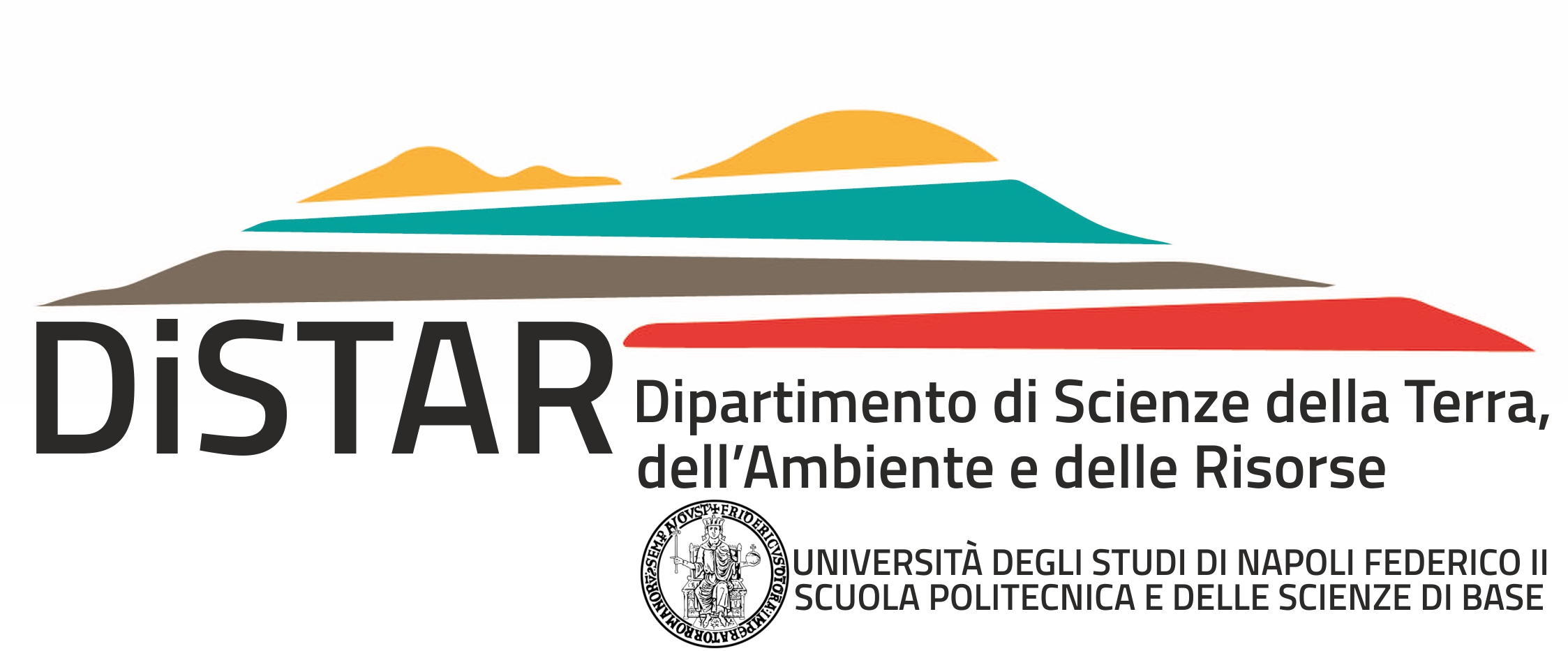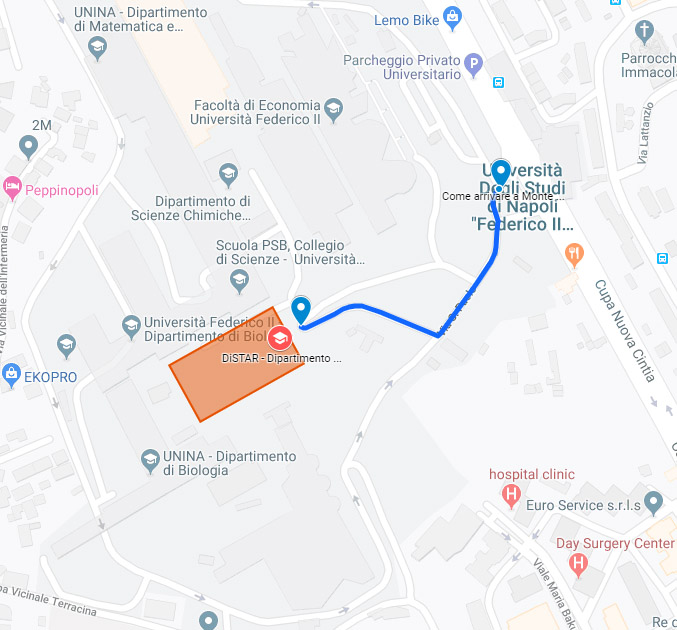Distinguished Lectures in Earth Sciences
Per il ciclo delle Distinguished Lectures in Earth Sciences, mercoledì 9 Luglio alle ore 11 nell'Aula del Consiglio (DISTAR, complesso universitario di Monte Sant'Angelo), Kathrin Fitzsimmons (School of Earth, Atmosphere and Environment; Monash University, Melbourne, Australia), si terrà un seminario dal titolo:
Chi semina vento raccoglie tempesta: what aeolian sediments can tell us about changing landscapes and climate
Sarà possibile seguire il seminario anche su Zoom e Youtube ai seguenti link:
Meeting ID: 847 1085 9733
Passcode: 411690
https://www.youtube.com/live/vS034a1w6dg

Kathryn Fitzsimmons
School of Earth, Atmosphere and Environment
Monash University
Melbourne, Australia
Almost half of the Earth’s land surface is represented by drylands - deserts and their semi-arid and subhumid margins. Drylands are often dominated by unconsolidated, aeolian sediment, which preserve information about past conditions and interactions between the atmosphere and land surface. Desert margins in particular are hypothesized to become increasingly unstable and unable to support human populations in a future dominated by accelerating global change. Since drylands also host some 40% of the world’s human population, this increasing instability will become a central concern for the future.
In this talk I will take you on a tour of the information we can reap from aeolian sediments in drylands: what they can tell us about landscape and hydroclimate change through time. We will take a look at the evidence for past environments across a range of scales, starting with the what charge held within the crystal lattice of individual quartz grains can tell us about the timing of aeolian deposition and sediment routing. We will then scale up to examine the morphology of lake margin shorelines and dunefields which provide the key to interactions between landforms, hydroclimate and synoptic-scale climate circulation. I hope to convince you that even at the geological level, there is truth to the saying “chi semina vento raccoglie tempesta”: who sows the wind, reaps a storm!
Biography:
QUALIFICATIONS
2016 Habilitation, Physical Geography, University of Leipzig
Dissertation title: Addressing the challenge of reconstructing palaeoenvironments in studies of human-environmental interactions
2003 - 2007 PhD, Quaternary Geology, Australian National University (ANU)
Thesis title: The late Quaternary history of aridity in the Strzelecki and Tirari Desert dunefields, South Australia
1998 - 2002 Bachelor of Science (Honours), University of Melbourne
1998 - 2001 Diploma of Modern Languages (German), University of Melbourne
EMPLOYMENT
Nov 2024 - Associate Professor of Physical Geography
School of Earth, Atmosphere and Environment, Monash University, Australia
Adjunct Associate Professor
Monash University European Research Foundation, Prato, Italy
Associate Investigator
ARC Centre of Excellence for Indigenous & Environmental Histories & Futures
Sept 2021 – Oct 2024 Professor of Terrestrial Sedimentology
Department of Earth Sciences, University of Tübingen, Germany
Dec 2016 – Aug 2020 Max Planck Research Group Leader (W2 Professor)
Max Planck Institute (MPI) for Chemistry, Mainz, Germany
Nov 2016 – Dec 2020 Privatdozentin / Associated Professor
Institute for Geography, University of Leipzig, Germany
Feb 2010 – Nov 2016 Junior Researcher, Luminescence dating group manager
Dept Human Evolution, MPI for evolutionary Anthropology, Leipzig, Germany
Sept 2007 – Jan 2010 Postdoctoral Fellow, Luminescence dating laboratory manager
Research School of Earth Sciences, ANU, Canberra, Australia
RESEARCH GRANTS AND FUNDING (Selection)
Total funding awarded: AUD >5 900 000
2023 - International Quaternary Association Network Projects (2)
Warm intervals in the Southern Hemisphere (WiSH). EUR 24 000.
Integration of ice core, marine and terrestrial records. EUR 32 000.
2023-2024 German Academic Exchange Service – Universities Australia Exchange Programme
Hydroclimate change in expanding and vulnerable desert margins. EUR 17 584.
2023-2024 RGS-IBG Thesiger-Oman International Fellowship Assessing the risk of sediment mobilization in Central Asian drylands in the context of climate change. GBP 7832.
2017-2022 Max Planck Society Independent Group for Terrestrial Palaeoclimates. EUR 2 000 000.
2017-2019 Deutsche Forschungsgemeinschaft (DFG) Sachbeihilfe (as PI) Terrestrial system response to North Atlantic climate oscillations during the last full glacial cycle. EUR 258 000.
2012-2013 DFG International Cooperation Grant (Mongolia-Germany) EUR 8 300.
2011-2013 Australian Research Council (ARC) Discovery Project (as Co-I) The last glaciation maximum climate conundrum and environmental responses of the Australian continent to altered climate states. AUD 360 000.
2010-2012 ARC Discovery Project (as PI) Human responses to long term landscape and climate change in the Willandra Lakes WHA. AUD 406 462.
GRADUATE STUDENT AND ECR SUPERVISION
Current: 2 PhDs; 1 MSc
Graduated/completed: 8 Postdocs; 4 PhDs; 8 MSc; 4 BSc; 6 Practica
LEADERSHIP, COMMITTEES, COMMUNITY SERVICE (last 5 years)
2023- Vice President, International Focus Group for Loess and Palaeopedology
2023- Steering committee (senior scientist mentoring ECR Speakers), WiSH project
2017- Mentor (female scientists), 4 programmes: Australasian Quaternary Association; European Geosciences Union; Minerva FemmeNet (Max Planck Society); Athene Programme (University of Tübingen)
2022-2024 Deputy Speaker, Geology Pillar, Department of Geosciences, University of Tübingen
2019-2021 Speaker for independent Max Planck Research Group Leaders
PRIZES
2016 Hans-Bobek-Preis für Geographie, ÖGG. EUR 2 000.
2014 Albert Maucher-Preis für Geowissenschaften, DFG. EUR 10 000.
2007 Director’s Prize for Scientific Communication, ANU
PUBLICATIONS
98 peer-reviewed journal articles (67 in Q1 journals)
9 book sections
17 other reports
h-index 38/34 (google scholar/scopus)
4281/3218 citations (google scholar/scopus)
ORAL PRESENTATIONS
60 Conference papers as presenter/first author, of which 10 invited/plenary/keynotes
59 Invited seminars, Highlights: Geological Society of India (2024); University of the Witwatersrand, South Africa (2018); University of Oxford, UK (2017); College de France, Paris, France (2016); Michigan State University, USA (2016); Aberystwyth University, UK (2008).






